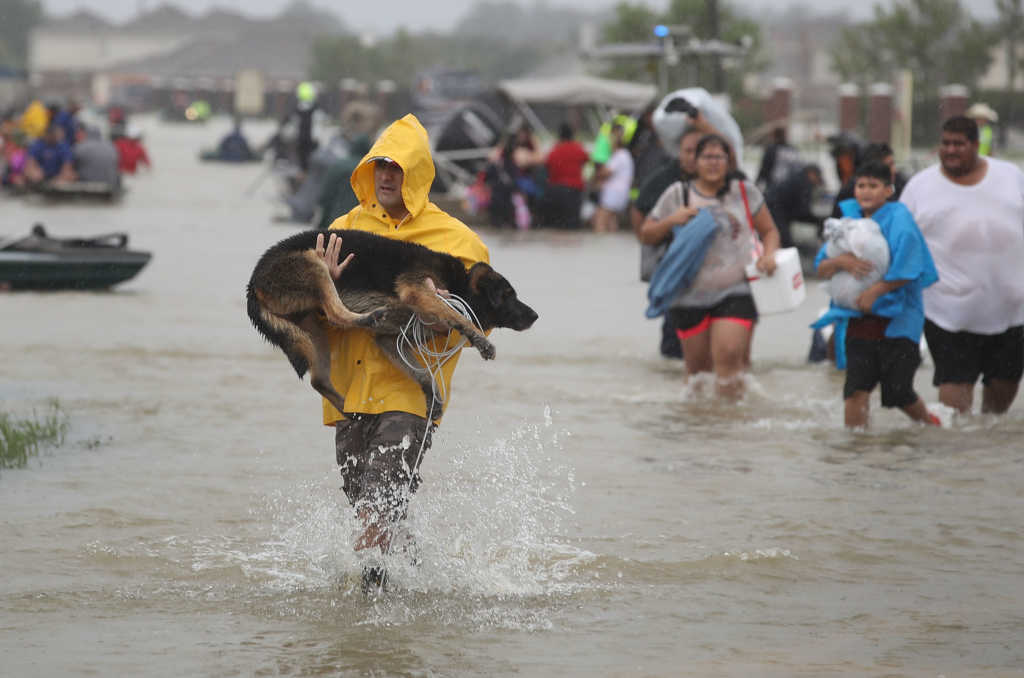Those affected by Hurricane Harvey may be in more dire straits than initially thought.
As the damage is being assessed, it is expected to come in at least $35 billion, Robert Hunter of the Consumer Federation of America told the Star-Telegram. Unlike Hurricane Katrina, however, which cost about the same, most who were affected by the storm don’t have flood insurance.
Katrina saw coverage of about half those affected. Hunter estimates two in 10 will be covered by Harvey. The storm’s end thus won’t signify the end of troubles for those along the Gulf Coast. Due to high costs for repairs, some residents may be forced to leave if they can sell their homes.
The issue of getting the right insurance can be complicated, as different kinds are necessary for fixing damage caused by wind or rain. As the Star-Telegram explained:
Homeowners insurance typically covers just damage from winds, not floods. For that, you need separate coverage from the federally run National Flood Insurance Program. The insurance must be bought by homeowners with federally-backed mortgages living in the most vulnerable areas, called Special Flood Hazard Zones.
People in those areas and near them have complained for years that the premiums are too high, though they would be much higher still if not subsidized by the federal government.
Much of the Houston area falls outside those most vulnerable zones and many homeowners who aren’t forced to have coverage have decided to do without. Now they are stuck because much of the damage in the nation’s fourth largest city won’t be covered by their homeowners insurance.
Thus, homeowners insurance may not cover much, even those who have it:
Homeowners with water damage can get paid through their homeowners insurance but only if wind blows out a window or sends a roof aloft first, allowing the water in. If the water rushes through the floorboard or walls, you’re not covered.
What relief may come will be in the form of forbearance from banks willing to help homeowners make their bills.
For homeowners facing big bills, some banks may be willing to help. During a disaster like Harvey, they typically will institute a type of forbearance program on any borrowers who are in the disaster’s impacted counties.
The government is not unsympathetic to the plight of Texans, however. President Trump is expected to visit the state on Tuesday, though will stay clear of Houston this time so as to not impede the efforts of first responders. Vice-President Pence also said during a Monday telephone interview on “The Rush Limbaugh Show” that many Americans are eligible for assistance:
But once the flood waters subside, then the real work of recovery will begin in earnest, and we’re going to be making sure upwards to a half-a -million Americans that may be eligible for disaster assistance know that we are with them, we’ll support them. And we’ll see Houston and southeast Texas all the way through this crisis.
The conditions are expected to even worsen, according to the National Weather Service, which referred to the storm as “catastrophic flooding” and said it “is expected to worsen.” The statement made clear that “This event is unprecedented and all impacts are unknown and beyond anything experienced.”
Many of those rescued and survived in Houston and the surrounding areas hit hardest by the storm are grateful to be alive.
Many inspirational stories of heroism and survival have also come to light out of Harvey.
Those who do make it out of the storm are going to continue to need our prayers and our aid, as many of us have been doing.
READ: These 10 Images From the Hurricane Harvey Rescue Efforts Prove America is GOOD at Heart


